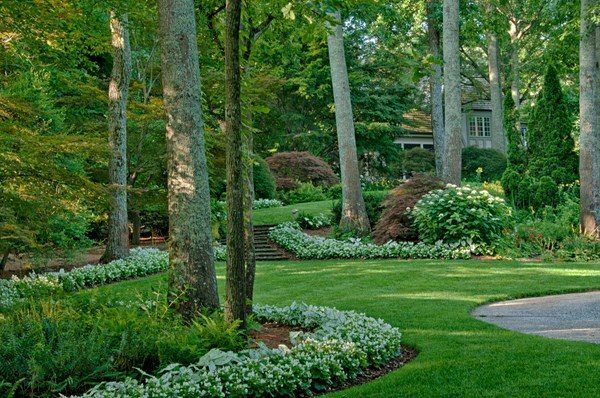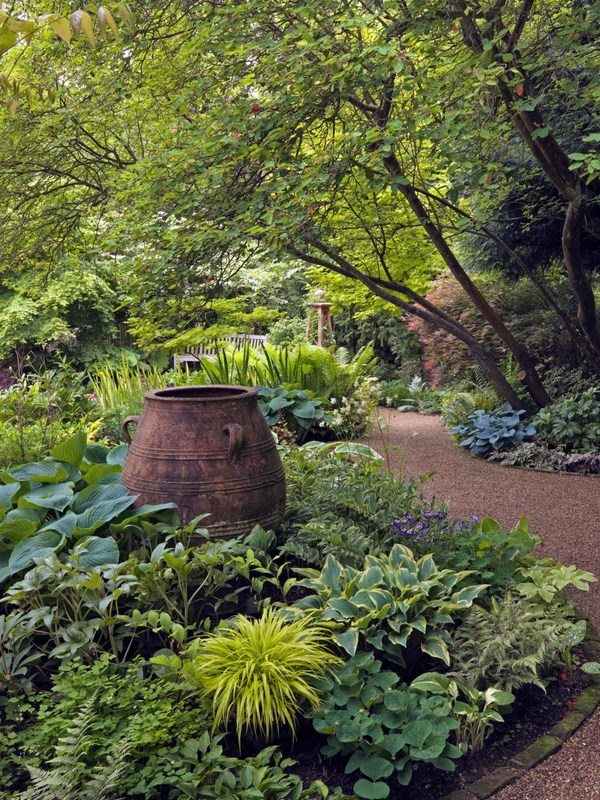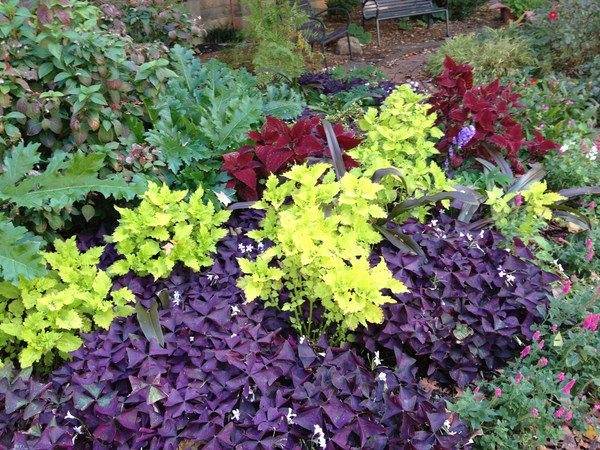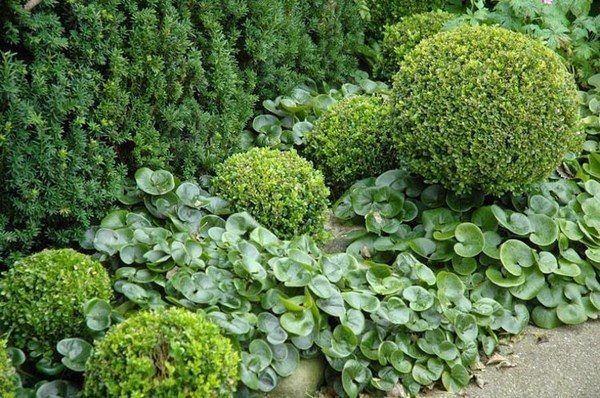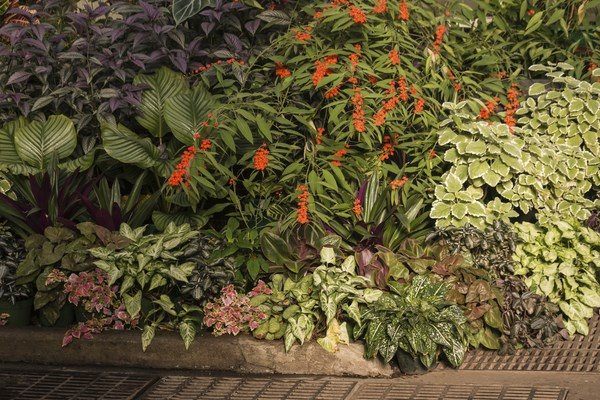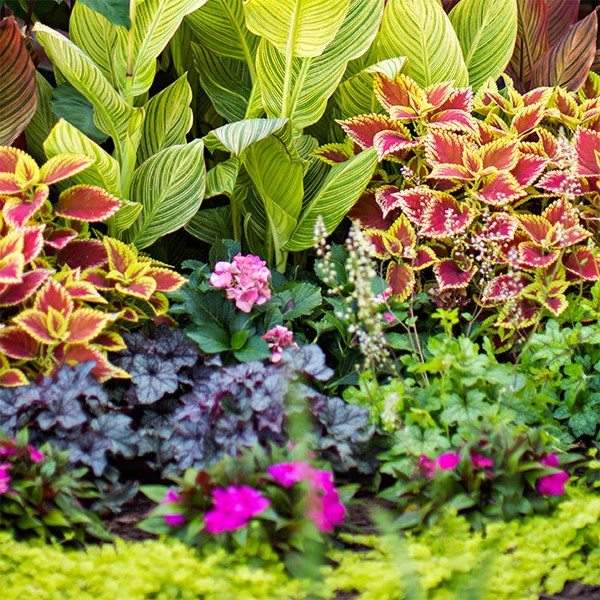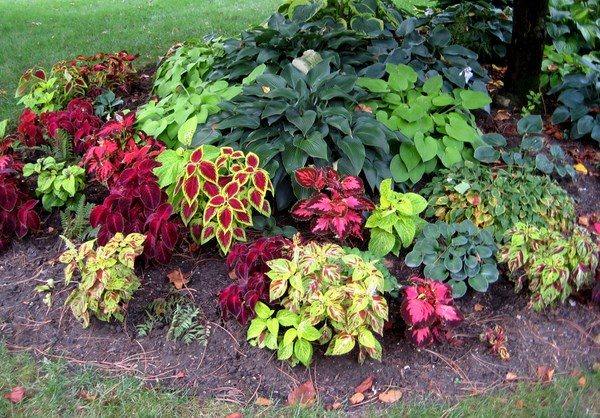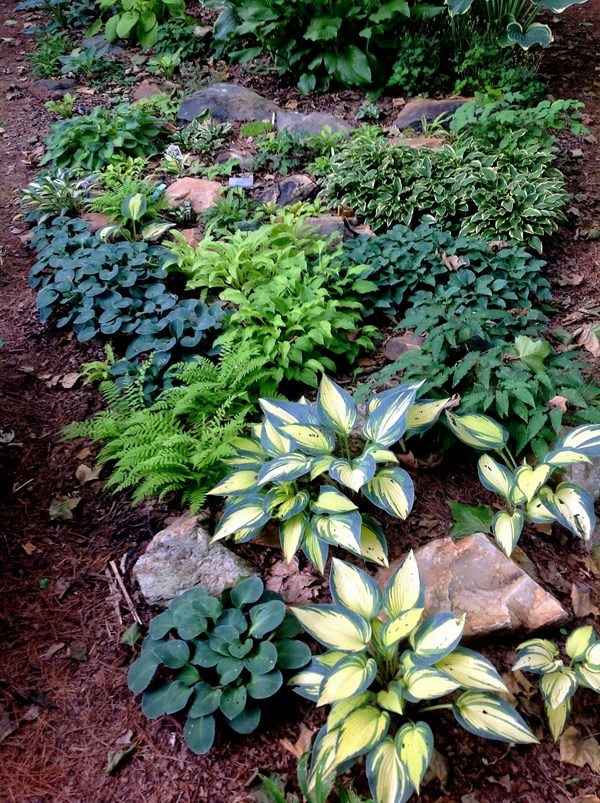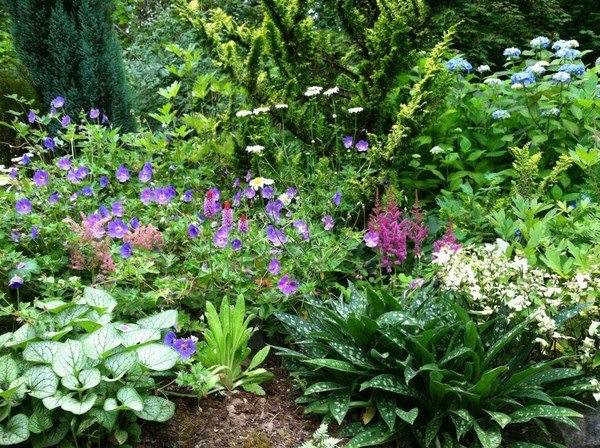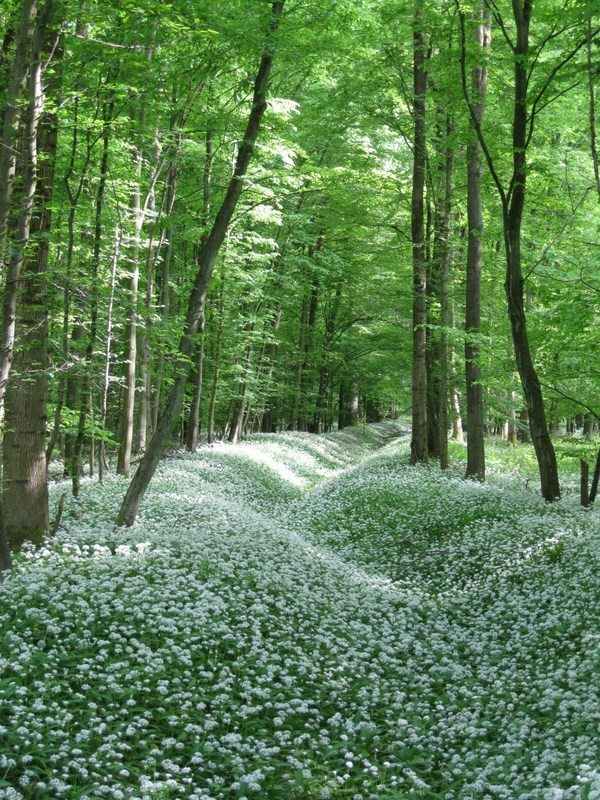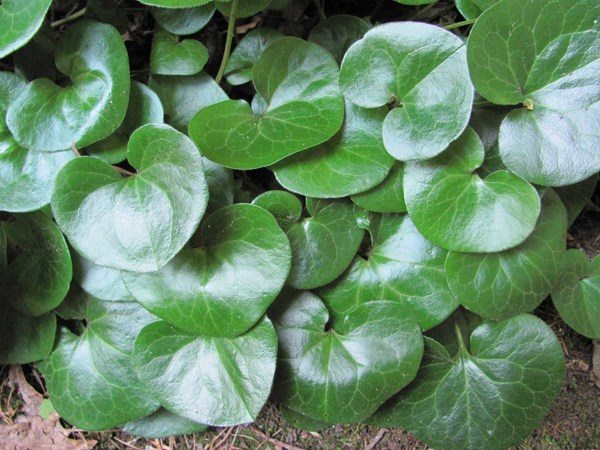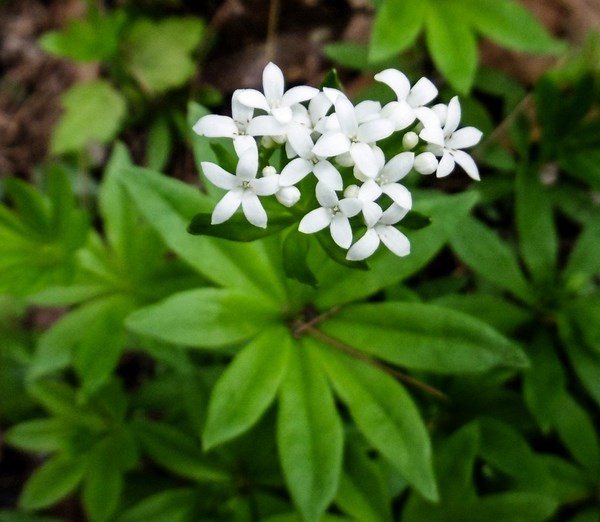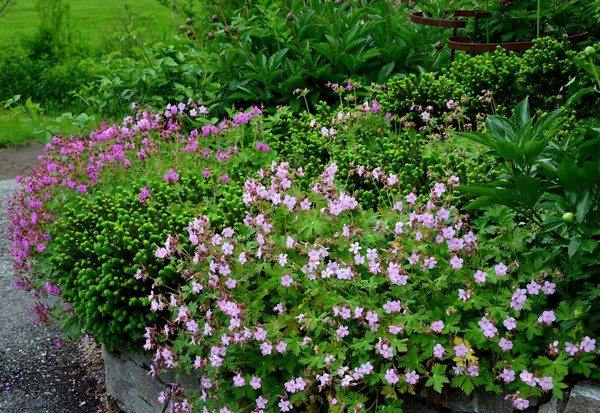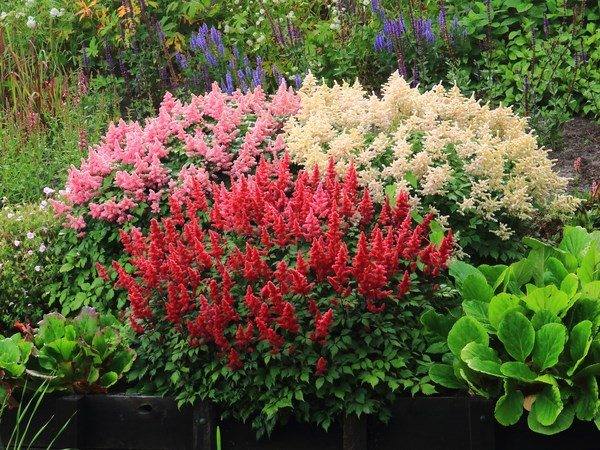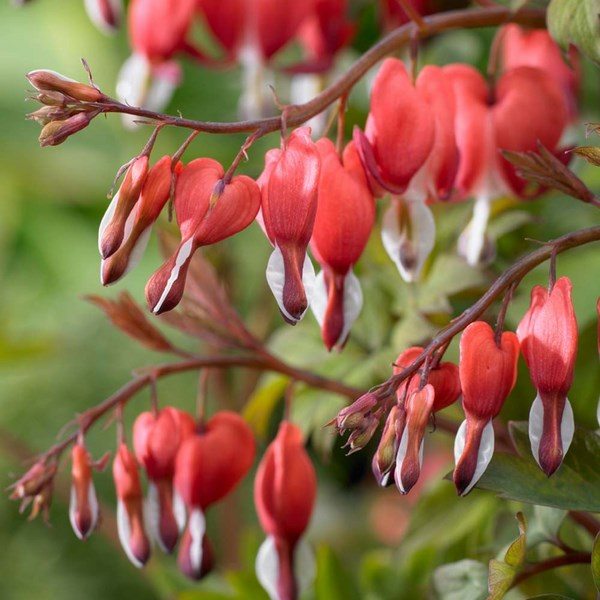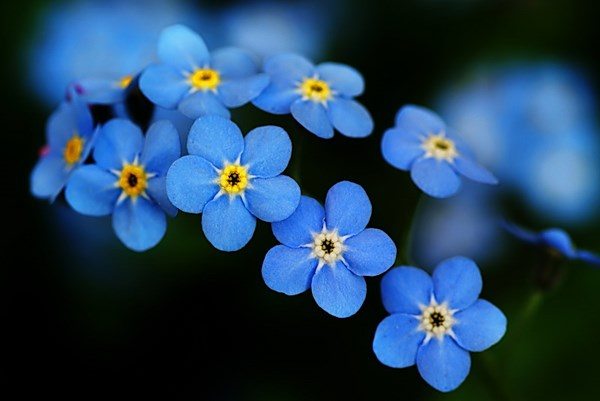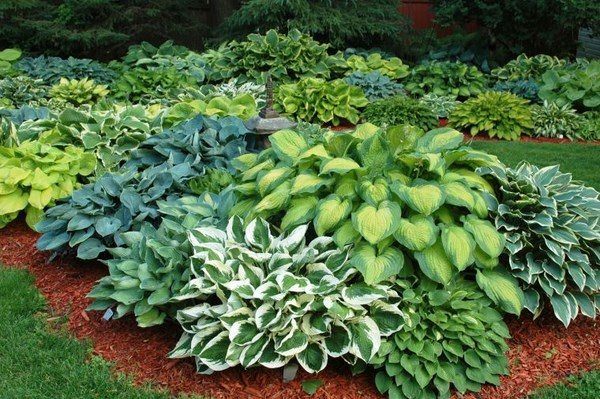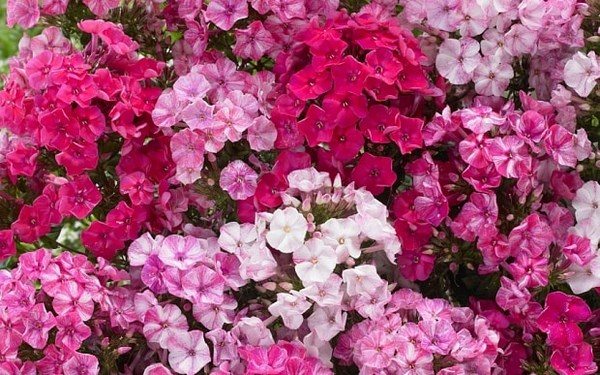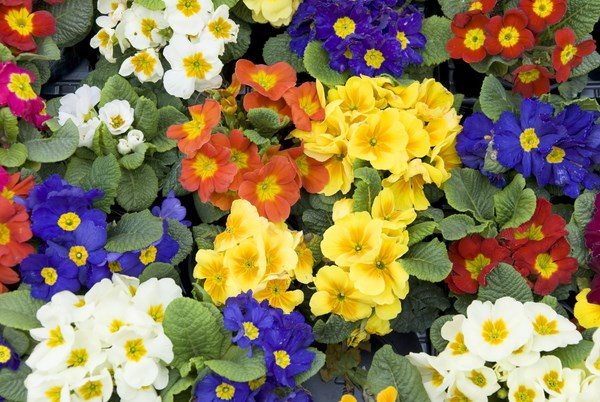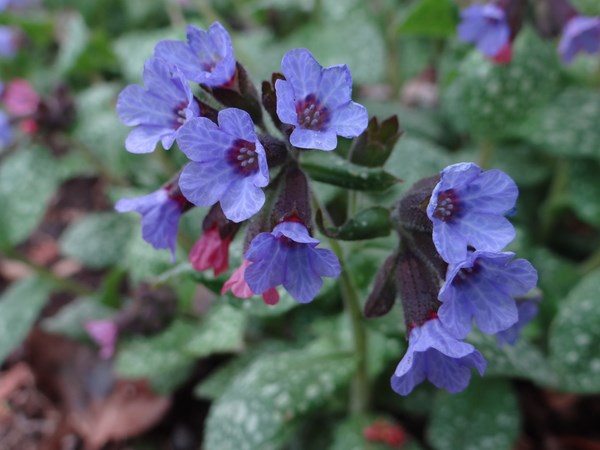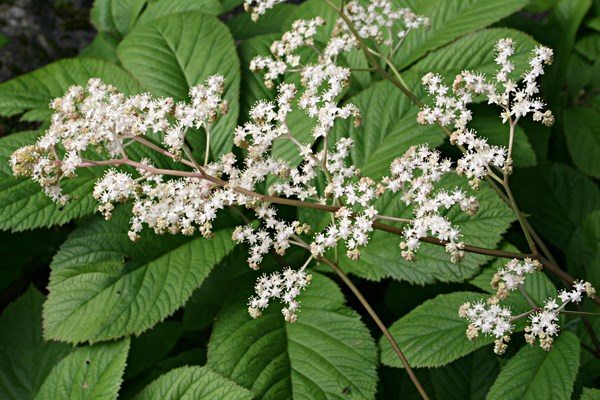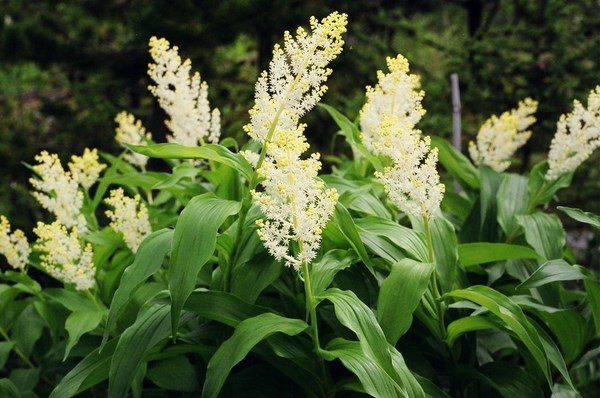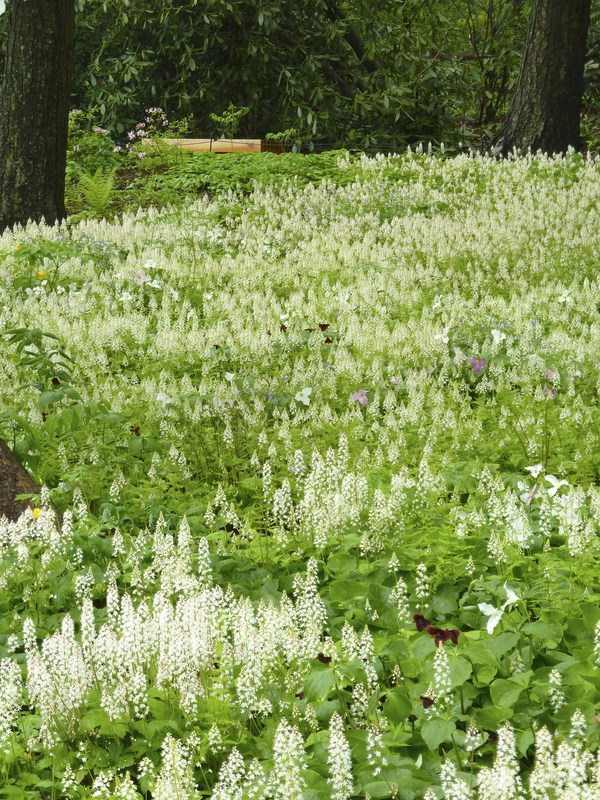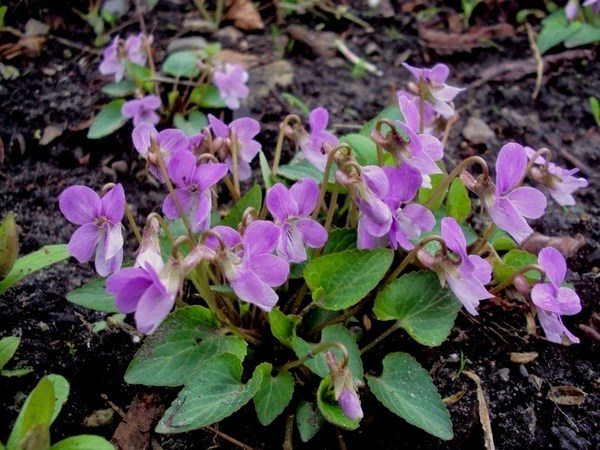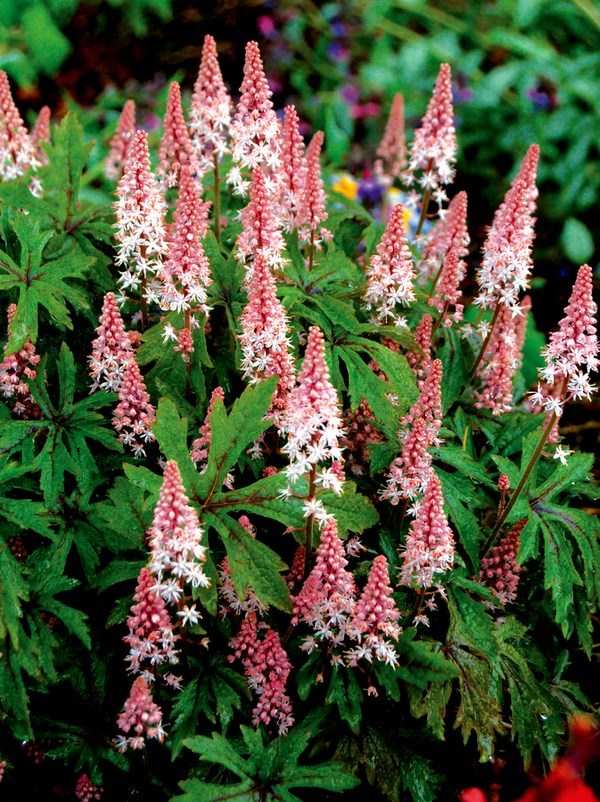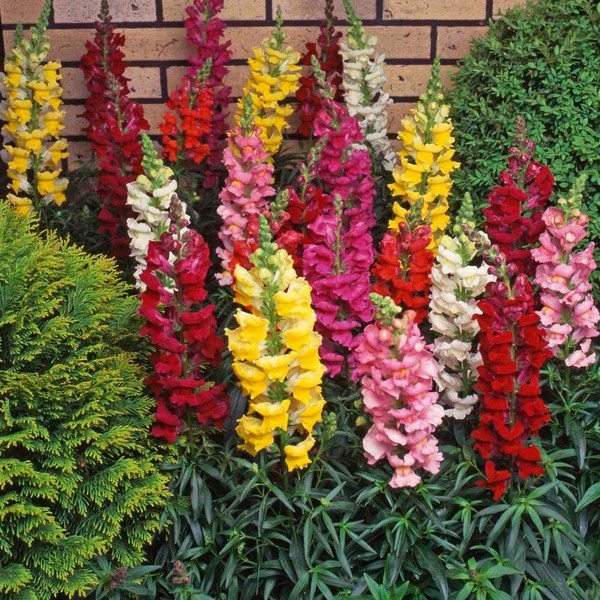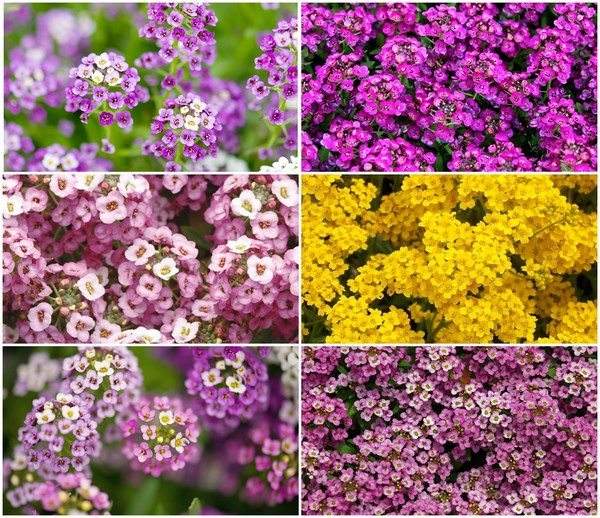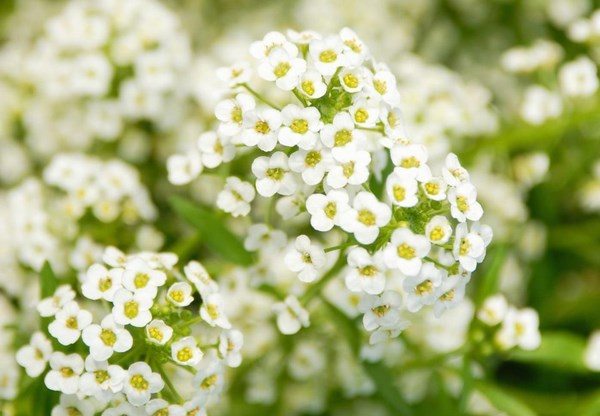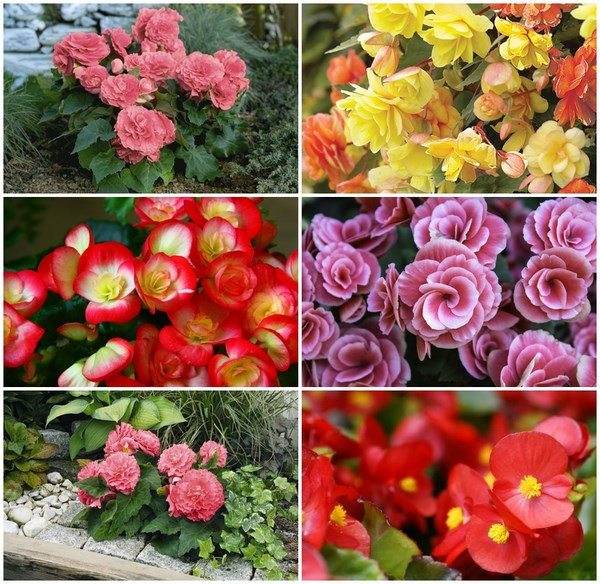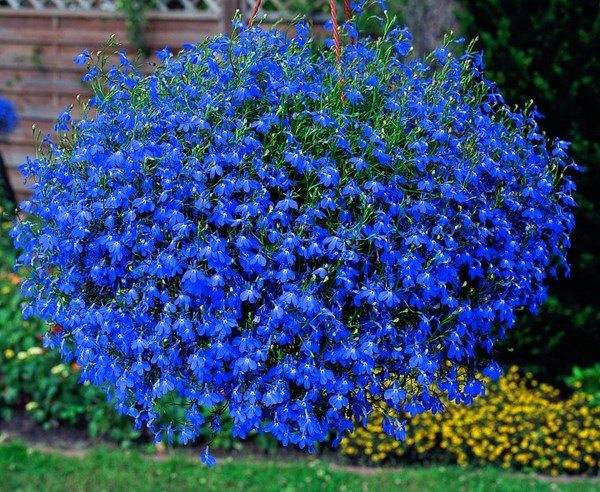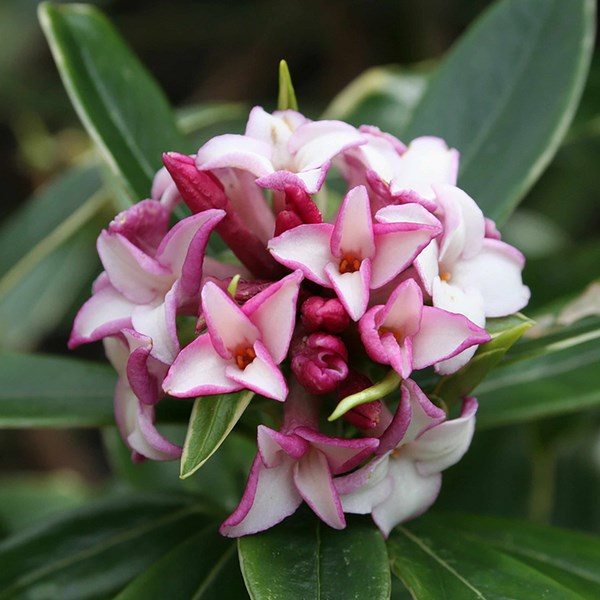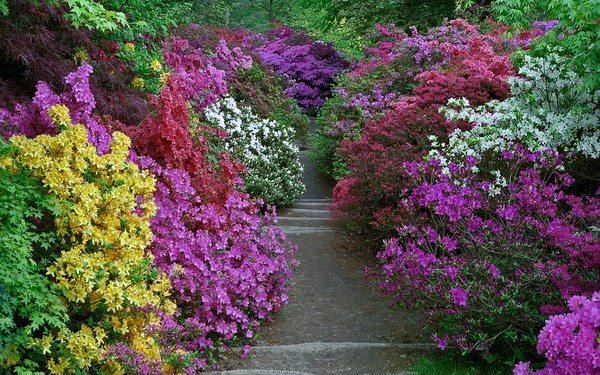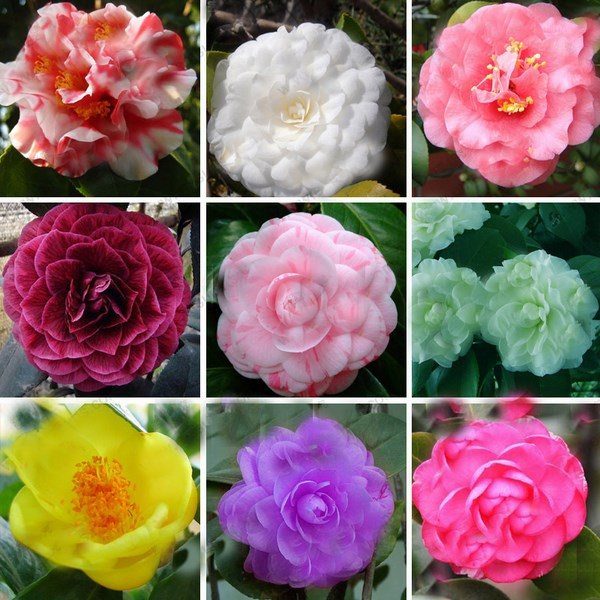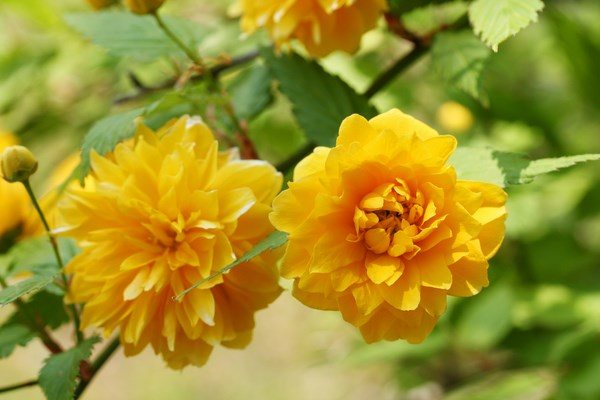Shade garden design ideas will be of help to all owners who would like to turn a shady spot into a beautiful flower garden. The shady corners in the garden often become a favorite resting place in hot summer days, where you can sit down sheltered from the scorching sun rays, and enjoy a couple of hours with a good book or just observe the picturesque environment and enjoy a couple of peaceful hours.
Many beginners or inexperienced gardeners feel somewhat worried as they think that flowers and plants need a lot of natural light, watering and constant care. This is of course, true, but the general rule does not apply to all species and further on we shall have a look at suitable plants that will transform an unsightly corner into a fascinating backyard retreat. Although a challenge, it is quite possible to create a beautiful outdoor area. This will not only improve the overall exterior design but will add value to your property.
What is a shade garden and how to determine the type of shade?
The duration and intensity of sunlight is the main factor that determines the illumination or shade in a garden or in a particular garden area. The level of illumination, respectively shade, will vary depending on the season and is influenced by sun height. Shade may be a result of natural conditions or as a result of planted trees or on the side of buildings and structures. Another factor that determines the amount of light is the facing of the building and outdoor structures. There are different types of shade which are generally divided into several categories:
Dense (deep) shade – this type of shade is typical for areas under evergreen trees, under outdoor structures or around buildings. These areas get about 3 hours of direct daylight in the middle of the day and limited light for the rest of the day.
Full shade is quite similar to dense shade, but depending on the season of the year, the spot may get some amount of daylight. One of the easiest techniques to reflect light and illuminate such areas is to arrange a path or ornamental stones in light colors or paint your garden fence in a light color.
Light shade garden areas (dappled shade) are found under tall or deciduous trees and although not completely deprived of natural light, the amount of sunlight that they receive is not enough for flowers blooming in the summer. These areas are suitable for shade loving plants that flower in spring, i.e. before the trees come into leaf.
Partial shade (morning or afternoon shade) areas do receive sunlight but only for a certain part of the day – between three and six hours. Obviously, morning shade areas are those ones that are shaded at dawn and dusk and receiving light in mid-day and afternoon hours while afternoon shade areas are illuminated at dawn and dusk and shaded in mid-day and afternoon hours.
Before choosing the plants for a shade garden you need to determine the illumination of the selected area during the different seasons, the type of soil and the level of moisture in the soil. Experts advise that generous mulching in a shady dry zone is a must and should be done every year in the spring, when the soil is gets warm and saturated with moisture.
Shade garden design ideas and tips for landscaping
It is good to know that there are some simple design and decorating techniques that will be of help when planning the layout and the appearance of a shady spot in your garden. Once you have chosen your shade-tolerant or shade-loving plants, you can add some features which will enhance the charm and character of the outdoor area. By all means, making a plan is a good idea. Draw a sketch and try to visualize your ideas. This will help you avoid mistakes and make the most of the available space.
Adding a path is a great way to improve the look of a shady area. Pavers, bricks, stepping stones will add greatly to the landscape and will give you access to the farthest corners of the backyard.
Another simple technique to beautify a shade garden or a shady area is to add a bench. Surround it with flowers and you will have a fantastic reading corner or a place to enjoy a glass of wine.
A shade garden will benefit from combining different textures. Obviously, the choice of flowers would be limited, but you can combine plants and shrubs with different colors and foliage. Red, yellow, green – color contrasts can be created successfully if you chose the right plants.
Add a water feature, a statue or other art objects in the design. They will add interest when blended in the décor and can become a stunning focal point. Depending on the style of your décor you could choose anything – from garden gnomes to wind chimes, from mini pond to waterfall. A bird feeder, for example, will attract birds and you will enjoy bird songs while having a coffee on a Sunday morning.
How to choose shade garden plants?
Shade tolerant or shade loving plants – the choice of plants for a shade garden will depend on the type of shade because some plants need more light than others. Whether perennials, shrubs or spring flowering plants – you can choose as per your personal preferences and your idea for the landscape and overall appearance of the outdoor area. Those, who prefer tropical or rose gardens, will have to give up the idea for a place full of blooming flowers. However, there are enough alternatives to choose from which will give you a lush and colorful backyard and transform a shaded area into an exquisite garden.
Here are some general ideas how to choose the right plants depending on the type of shade:
Shade loving plants prefer shady areas. For example – Lily of the valley, periwinkle, astilbe, geranium, hellebore will not grow as well in the bright sun.
The variety of shade-tolerant plants includes species that can grow both in the sun and in the shade – doronikum, aquilegia, etc. All early spring bulbous plants are suitable for planting in the shade. Snowdrops (galanthus), scylla, muscari are often planted under shrubs and trees. At early spring they have enough light, and the period of vegetation of these plants is short. Daffodils and tulips can also grow in shaded places as well as crocosmium and ornithogallum.
Shade-tolerant perennials are a good choice as they do not require an annual sowing and are easy to care for. Hosta, ferns, primroses, dicentra, forget-me-nots, arunkus, coltsfoot, wild strawberry – these are just some of the many options. Irises, daylilies, phloxes, aconite, peonies need at least an hour of sunlight and depending on that you can plant them safely, provided they get the necessary sunlight.
Understanding the needs of the plants in different lighting conditions and taking into account the neighboring trees can encourage you to create a garden in a shady corner. Here is a list of some of the most popular and suitable plants for shade gardens:
Ground covering plants for shade gardens
Ground covering plants for shade gardens are ideal when you want to add texture and create a green carpet beneath the shrubs and trees. The main advantage of ground covers is that they are practically maintenance free and most of them spread on their own. You can plant one species or combine different ones, depending on the desired effect.
European Wild Ginger (Asarum europaeum) is an excellent ground cover plant with glossy, heart-shaped, dark green leaves which remain green in mild winter weather. It reaches about 15 cm. height and is a slow growing plant. Ginger is practically versatile and will grow well in low-light conditions and dense shade.
Sweet Woodruff (Galium odoratum) is a very delicate looking plant but despite its fragile appearance it is quite tough and a good choice as a ground covering plant under trees. The leaves have a pleasant scent and it blooms during May-June with white flowers.
Lily-of-the-Valley (Convallaria majalis) is one of the most beautiful and delicately fragrant blooming ground cover plants. It blooms in May-early June and its tiny bell-shaped flowers are loved by everyone. Lily-of-the-Valley is a low maintenance plant which does not require any particular care to thrive. It feels best when planted on a moisty soil and partial shade.
Geranium macrorrhizum is a fragrant herbaceous ground covering perennial blooming from June to July with purple pink petals and may bloom again in the beginning of autumn. The stem is upright with a length of 6 to 50 cm. The leaves are large), deeply cut, slightly sticky to the touch. Part shade is the best environment for geranium but it feels well in sunny areas as well. The plant is adaptable and beautiful and spreads easily by rhizomes.
Other ground cover plants for shade gardens – Solomon’s Seal (Polygonatum odoratum Variegatum), Bearberry (Arctostaphylos), Lady’s mantle (Alchemilla), Winter creeper (Euonymus fortunei), etc.
Perennials, suitable for shade gardens
Astilbe belongs to the Saxifragaceae family and comes in more than 30 species. It is one of the most popular shade garden flowers. Depending on the species and variety it reaches from 30 cm. (dwarf varieties) to 150 cm in height. The elegant leaves of this splendid plant are colored in bronze, pale green, blue green, dark green or wine red, with a wedge-shaped base and placed on a strong stem. Astilbe comes in a variety of colors – white, pink, lilac, red and violet-purple in different shades depending on the species. Combining varieties with different foliage colors and heights is a great idea as this will add a lot of interest, colors and textures in the garden. Glorie Purpurea has a magnificent purple color, Astilbe Federsee is tenderly pink, while Astilbe Hyacinth flowers in deeper pink shade. Astilbe Fanal is especially attractive with its rich, bright red color.
Dicentra is a perennial that comes in many varieties – Dicentra Canadensis, known as Squirrel-corn, Dicentra cucullaria (Dutchman’s Breeches), Dicentra eximia (Turkey-corn). One of the most popular species is Dicentra spectabilis, known as Bleeding heart. It reaches a height of 70 – 90 cm and blooms in May-June. Wonderful heart-shaped flowers hang from arched stems above pinnate foliage. Colors vary from white, pink to purple and red. One of the most delicate and attractive species is Dicentra spectabilis Alba which has exquisite white blooms.
Forget-me-not (Myosotis) belongs to the Boraginaceae family. Their genus numbers about 50 species. These are some of the most beautiful spring flowers. There is no way that someone does not fall in love with the little blue clouds of f Forget-me-nots and remain indifferent to their beauty and charm. They are amazingly modest and unobtrusive, charming and fragile. Forget-me-nots reach 10 to 40 cm in height and have small blossoms in blue and whitw. Some species have white and pink blooms.
Hosta plants are perennials with lush foliage and are among the favorites of gardeners. Foliage is large, narrow or rounded in heart shape and very varied in color green, yellow, white, blue, dotted with numerous colored veins, bluish-green. Hosta comes in so many varieties, heights and textures that it is hard to choose from. The most important that one needs to know about Hostas is that they are versatile, durable and maintenance free. The different varieties range in height from miniature to medium, large or giant and can reach up to 1 meter.
Phloxes come in perennial and annual variety and numbers more than 60 species. They bloom in the second half of summer. Usually the dwarf species are used in rock gardens, while higher species are suitable for shade gardens. Perennial plants reach 50 – 80 cm and annual phloxes reach 20 – 50 cm. In the late autumn, perennial phloxes must be cut to the root. The colors of blooms varu from white, pink, purple, blue and these are the perfect way to add color to a shady garden spot.
Primrose (Primula vulgaris) is a wonderful, short perennial flowering from April to May. All the species from the family of Primulaceae (more than 400 species), in general, feel great in the shade. They can grow in the shade of taller and sun-loving flowers. The height of shade-loving primroses is 10 – 20 cm and the variety of colors is quite big – from white, yellow, blue, lilac, pink to deep reds.
Pulmonaria (lungwort) – is a flower that loves shade and has beautiful silvery foliage. The leaves of pulmonaria are usually long and narrow, with silver spots, sometimes entirely silver. The height of the plants is 30 – 40 cm. The flowering period of Pulmonaria is April – May and the colors of the blossoms vary from white through pink and blue.
Rodgersia is a flowering herbaceous perennial and the family of Saxifragaceae includes different species – Rodgersia aesculifolia, Rodgersia podophylla, Rodgersia pinnata and its leaves can reach 30 to 80 cm. Flower stems can grow up to 1,8 m in height and the colors vary from white, pink to red. The flowering period is from late spring or early summer. Rodgersia needs moist soil and will grow equally well in partial shade and full sun.
Smilacina (Maianthemum racemosum) also known as Solomon’s plume, is a shade-loving perennial producing tiny creamy white star-shaped flowers from May to June. The plant grows rapidly forming beautiful decorative bushes and reaches a height of 60 – 90 cm.
Tiarellas (Tiarella cordifolia, Tiarella trifoliata), known as Foam flowers or Pink Skyrockets are shade loving plants, growing on partial or full shade spots, but will feel wll on areas with morning sunlight. The plant reaches a medium height of 30 – 50 cm and flowers in May – June but the flowering period depends on the species. One thing that you need to remember is that Tiarellas are not suitable for planting under conifers.
Violet (Viola) is a member of the family Violaceae and comes in more than 500 species. Some species are perennials, some are annuals. Perennial species are shade loving and you can choose from a variety of colors. Viola odorata blooms in May with white or blue flowers and reaches 10 – 15 cm. height. Viola labradorica blooms in the spring in early summer. Viola cornuta is flowering all summer long from May to September. It reaches up to 20 cm in height and has adorable purple flowers. Viola lutea (yellow) and two-flowered Viola biflora bloom from May to June in yellow
Other perennial plants that are suitable for shade gardens are Bee balm, Bellflowers, Foxglove, Hellebore, Siberian Iris, etc.
How to choose annual plants and flowers for shade gardens?
Annual plants suitable for shade gardens can add tons of charm to the shadiest places. Baby Blue Eyes (Nemophila menziesii), Cleome, Coleus, Browallia, Fuchsia Impatiens, Snapdragon, Larkspur, Wishbone Flower are just a few of the varieties. Here are some of the most popular ones:
Alyssum is a part of the Brassicaceae family and comes more than 100 species. Its pleasant fragrance is an additional benefit to the visual pleasure. It is an excellent edging plant, tolerant to many soil types and you will have a gorgeous carpet of tiny, little flowers in the shady corner of your garden. It grows best in partial shade and reaches 10 -15 cm of height. Comes in white, yellow, purple, pink colors and you can create beautiful combinations.
Alyssum will proved a carpet of tiny little flowers in your shade garden which makes it an excellent edging plant. It will tolerate a variety of soil types, but it will do best in areas with good drainage. Although all the colors will all grow in the shade, the purple varieties do better.
Begonia is a genus of more than 1000 varieties. The most popular types of begonia are Tuberous, Rex, Semperflorens, etc. Begonias have rounded fleshy leaves and their coloroften varies from pale green to chocolate brown. The size of the flowers can be different from 2 to 15 cm, depending on the particular variety and the colors range from white, pink, scarlet, yellow to almost black. Beginoas love shady areas and flower from June to September. These will be an excellent choice if you wanted to add splashes of vibrant colors and can be grown in containers as well.
Lobelia is an annual plant with small tender flowers. It is usually grown in hanging pots and baskets, is a great choice for shade gardens as well. With a height of 10-15 cm, blue, white, pink or purple shades, it flowers abundantly from June to October. The genus includes more than 400 annual, perennial and shrubby species.
Shade loving shrubs suitable for shade gardens
Adding shrubs to shade gardens provides an opportunity to add dynamics, different height, tons of interest, color and texture to the spot. Many people opt for evergreens and conifers but there are many other species to choose from. When you combine evergreen or flowering shrubs with some flower or foliage species you can create amazing visual effects. Here are some of the most popular species:
Holly (Ilex aquifolium) is an evergreen shrub reaching a height of up to 3 m. Holly is a classic holiday decoration and one of the most popular Christmas symbols. It has beautiful green foliage and red berries. You should not forget about the needels, but choosing holly for your backyard provides you with free Christmas decoration for the festive season!
Euonymus (Euonymus japonicas, Euonymus fortunei) is an eye catching shrub valued highly for its variegated leaves. The bi-colored leaves have green centers and white or golden edges Euonymus reaches a height of 1-1,5 m and is an invasive plant so you need to be careful or it will conquer the area around itself.
Yew (Taxus baccata) is a versatile shrub, an excellent choice not only as a privacy and hedge plant, but for shady garden corners as well. Yew comes in many varieties, shapes and sizes and sometimes it can reach up to 25 meters of height depending on the species. The needles are glossy, dark green and soft and preserve their look all year long.
Azalea (Azalea spp.) is a flowering shrub with beautiful colorful blooms. Azaleas belong to the Rhododendron genus and come in many varieties – from low-growinf species such as ‘Joseph Hill’ to tall varieties like sweet azalea (R. arborescens) or weeping species like “Pink Cascade”. The variety of colors of the blooms is just as wide – gold, pink, orange, white, red, purple etc. Azaleas prefer partial shade and well-drained acidic soil.
Camellia (Camellia sp.) is another flowering shrub, exquisitely beautiful and blooming from autumn to late spring which makes it among the most preferred species for winter gardens. The leaves of Camellias are simple, thick, bright and glossy and the range of flower colors is almost unlimited – from pure white through pink hues to red.
Japanese Kerria (Kerria japonica) is a versatile, magnificent shrub and its beautiful vivid golden-yellow chrysanthemum-like flowers will stand out in a shady corner of the garden and add brightness to the atmosphere. The leaves are bright green but turn yellow in autumn and the arching branches give the Japanese Kerriaa weeping look. The plant feels best in parial shade but it does not mind deep shade as well and you can plant it under a mature tree.
Mountain Laurel (Kalmia latifolia) is a flowering shade loving shrub and a greatly valued plant for landscaping. It has small leaves and amazingly beautiful flowers which come in large clusters while individual flowers have very interesting and unusual shape of a five-sided cup. The colors vary from white to pink, depending on the variety, and some species are speckled or lined with a contrast color. Areas with light shade are the best location for optimal flowering. The blooming period is end of May – beginning of June. Mountain Laurel can be planted with Azaleas and rhododendrons as it also prefers acidic soil.
Other shrubs suitable for a shade garden are Arborvitae, rhododendrons, Dwarf Bamboo, Dwarf Nandina, Indian Hawthorn, Mahonia, Boxwood, etc.


